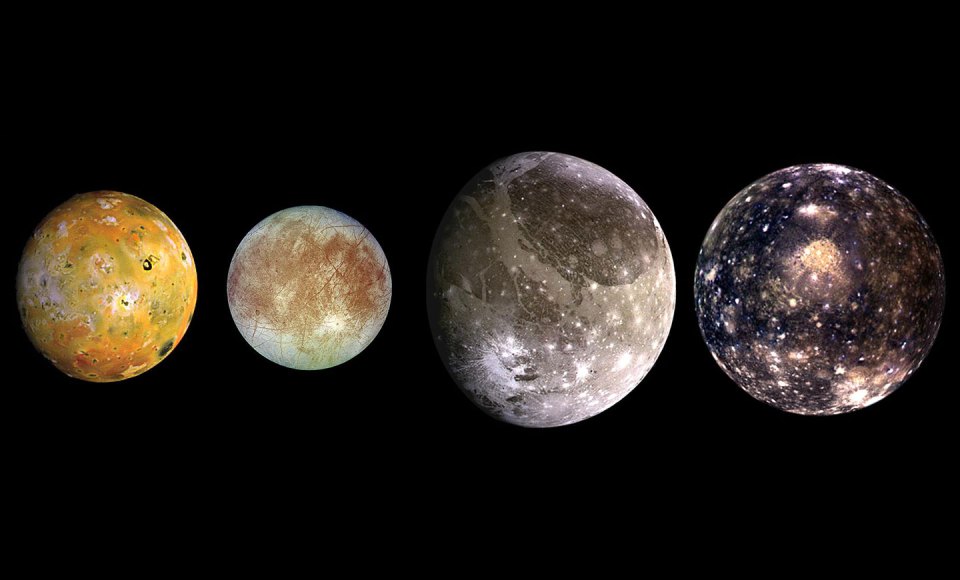Let’s learn about Jupiter’s moons
Europe’s Juice mission is now on its way to get a close-up view of Jupiter’s moons

Galileo discovered these four moons of Jupiter in the 1600s. From left to right, they are Io, Europa, Ganymede and Callisto.
NASA/JPL/DLR; adapted by L. Steenblik Hwang
Share this:
- Share via email (Opens in new window) Email
- Click to share on Facebook (Opens in new window) Facebook
- Click to share on X (Opens in new window) X
- Click to share on Pinterest (Opens in new window) Pinterest
- Click to share on Reddit (Opens in new window) Reddit
- Share to Google Classroom (Opens in new window) Google Classroom
- Click to print (Opens in new window) Print
This month, the European Space Agency launched its Juice mission to Jupiter. The spacecraft will make some observations of the gas giant. But Juice will also get close-up views of three of Jupiter’s largest moons. These are Europa, Ganymede and Callisto. All three moons are icy worlds thought to have oceans lurking beneath their surfaces. Europa in particular is considered one of the most promising places to find alien life in the solar system.
Galileo discovered these three moons in the 17th century. He also discovered a fourth moon of Jupiter called Io. That fiery world is the most volcanically active place in the whole solar system. The discovery of those four moons was key to Galileo’s realization that Earth is not the center of the universe.
Those moons were just the beginning, though. Astronomers have found many other moons orbiting Jupiter since then. The total count is now around 90 moons. Some of those moons may have formed from a dusty disk that swirled around Jupiter long ago. Others were likely wandering space rocks that got snagged by Jupiter’s intense gravity.
Want to know more? We’ve got some stories to get you started:
Jupiter has 12 more moons than we knew about — and one is a weirdo Astronomers found a dozen previously unknown moons of Jupiter. One may be a remnant of a larger moon that was all but ground to dust. (8/20/2018) Readability: 7.8
This moon’s surface slides, just like Earth’s Plate tectonics shape the surface of Jupiter’s icy moon Europa. (9/25/2014) Readability: 7.7
There’s a real upside to knowing you could be wrong Jupiter’s moons played a major role in Galileo’s discovery that Earth is not the center of the universe. (3/30/2023) Readability: 7.4
Explore more
Scientists Say: Habitable Zone
Let’s learn about the hunt for alien life
Space toilet may teach scientists how to scout for life on distant icy moons
Students help name 5 of Jupiter’s newly discovered moons
Jupiter’s moons could keep each other warm by raising tidal waves (Science News)
Aurora shift confirms Ganymede’s ocean (Science News)
Baby Jupiter glowed so brightly it might have desiccated its moon (Science News)
Activities
In activities from NASA’s Jet Propulsion Laboratory, see how principles of density and magnetism can help scientists study the ocean hidden beneath Europa’s surface.







